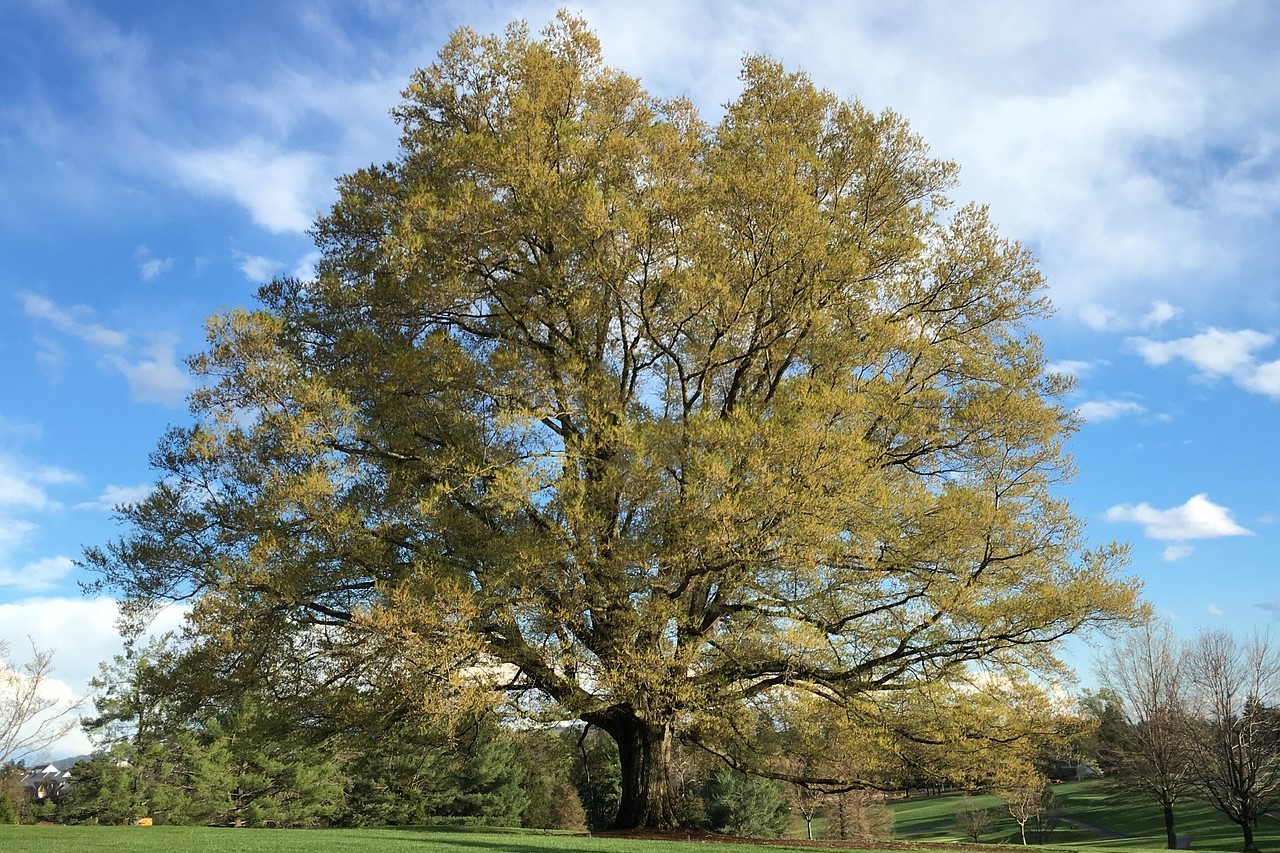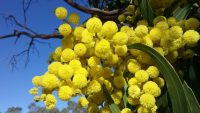White oak trees (Quercus alba) are majestic hardwood trees native to eastern North America, known for their stately appearance, strong wood, and valuable ecological roles. These iconic trees can reach impressive heights of up to 100 feet (30 meters) tall and have a wide spreading canopy, creating a commanding presence in their forest habitats. White oak trees are renowned for their longevity, with some specimens living for several centuries.
One of the distinguishing features of white oak trees is their distinctive leaves, which are lobed with rounded ends and a pale underside. In the fall, these leaves turn a rich golden-brown color before dropping in preparation for winter. White oak trees are also known for their acorns, which serve as an important food source for numerous wildlife species, including birds, mammals, and insects.
The wood of white oak trees is highly prized for its strength, durability, and attractive grain patterns, making it a popular choice for a wide range of woodworking projects. From furniture and flooring to barrels for aging wine and whiskey, white oak wood is valued for its versatility and resilience. Additionally, white oak trees play crucial ecological roles, providing habitat and food for wildlife, stabilizing soil, and contributing to the overall health and biodiversity of forest ecosystems. Despite facing threats from habitat loss, climate change, and diseases such as oak wilt, efforts to conserve and protect white oak trees are essential for preserving their ecological and cultural significance for future generations.

To know more about white oak trees, let’s take a look at these 10 interesting facts about white oak trees.
- Longevity: White oak trees are known for their remarkable longevity, with some specimens living for several centuries. They can survive for 200 to 300 years or more under favorable growing conditions, making them enduring symbols of strength and resilience.
- Hardwood Characteristics: White oak wood is highly valued for its strength, durability, and attractive grain patterns. It is commonly used in furniture making, cabinetry, flooring, and shipbuilding due to its excellent machining properties and resistance to decay.
- Versatile Use: The versatility of white oak wood extends beyond woodworking. It is also a preferred material for making barrels used in aging wine, whiskey, and other spirits. White oak barrels contribute to the flavor profile of the beverages by imparting subtle flavors and allowing controlled oxygenation.
- Acorns as Food Source: White oak trees produce large acorns that serve as an important food source for a variety of wildlife species. Birds, squirrels, deer, and other animals rely on the nutritious acorns for sustenance, particularly during the fall and winter months.
- Fall Foliage: In the autumn, the leaves of white oak trees turn a rich golden-brown color before dropping in preparation for winter. The vibrant foliage adds to the visual appeal of forests and landscapes, attracting visitors and photographers alike.
- Wildlife Habitat: White oak trees provide crucial habitat for a diverse array of wildlife species. Birds nest in their branches, squirrels and other small mammals seek shelter in their hollows, and insects inhabit their bark, contributing to the overall biodiversity of forest ecosystems.
- Historical Significance: White oak trees have played important roles in the cultural and historical heritage of North America. Indigenous peoples utilized their wood for crafting tools, building structures, and creating ceremonial items, while European settlers valued them for their timber and tannins.
- Tolerance to Pollution: White oak trees exhibit a degree of tolerance to urban pollution and poor soil conditions, making them suitable for planting in urban areas and along roadways. Their ability to thrive in diverse environments contributes to their widespread distribution.
- Ecological Services: In addition to providing habitat and food for wildlife, white oak trees offer numerous ecological services. They help to stabilize soil, prevent erosion, filter pollutants from water, and sequester carbon dioxide, mitigating the impacts of climate change.
- Threats and Conservation: Despite their resilience, white oak trees face threats from habitat loss, climate change, and diseases such as oak wilt and oak decline. Conservation efforts, including reforestation, habitat restoration, and disease management, are essential for preserving the ecological and cultural significance of white oak trees for future generations.
White oak trees stand as majestic symbols of strength, resilience, and natural beauty in the forests of eastern North America. With their enduring longevity, versatile wood, and vital ecological roles, these iconic trees have earned a place of prominence in both natural and cultural landscapes. From providing habitat and sustenance for wildlife to offering valuable timber for human use, white oak trees enrich the ecosystems they inhabit and the communities that rely on them. As we strive to conserve and protect these venerable giants for future generations, let us cherish their contributions to our lives and landscapes, recognizing the profound significance of these magnificent trees in shaping the world around us.



